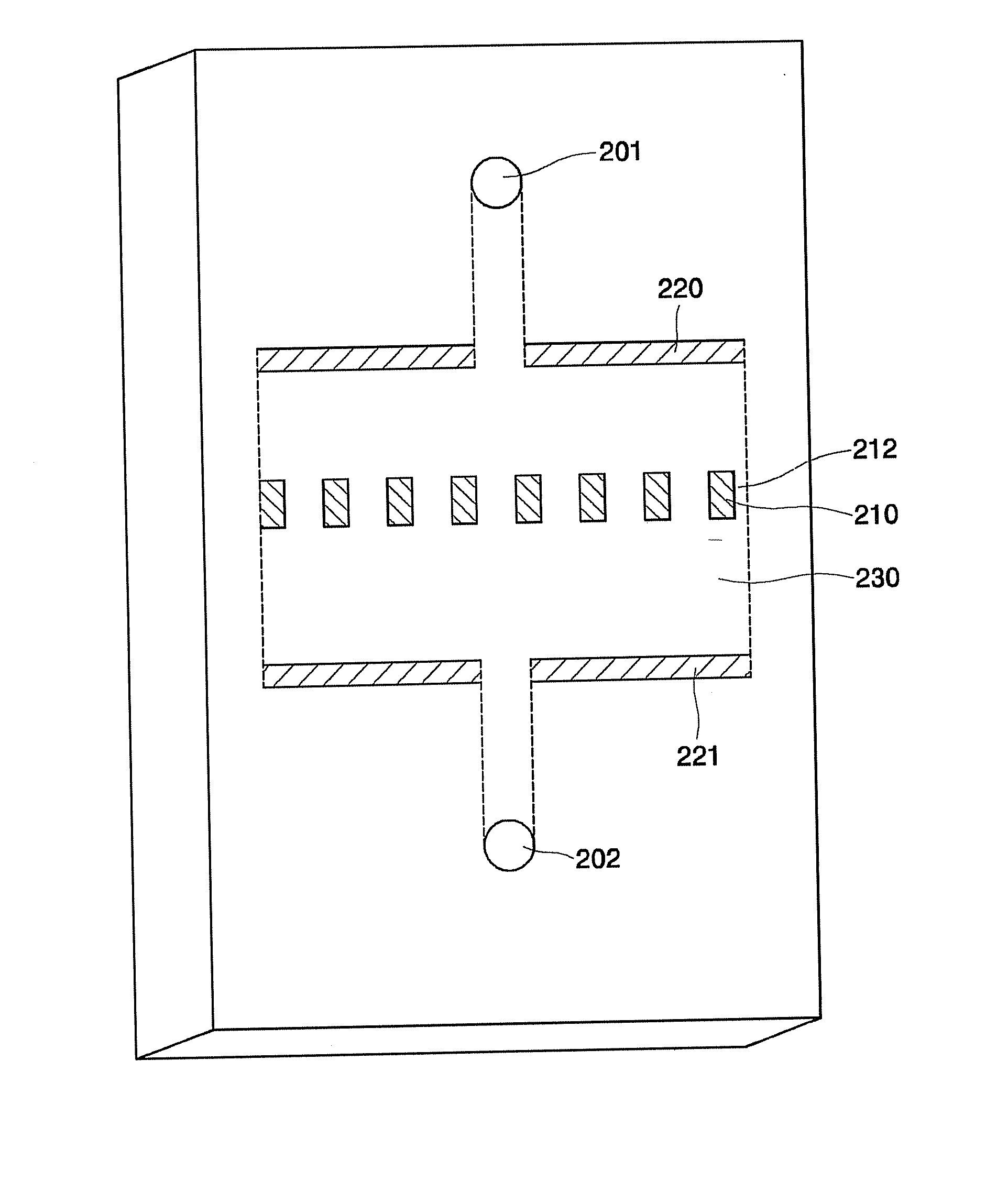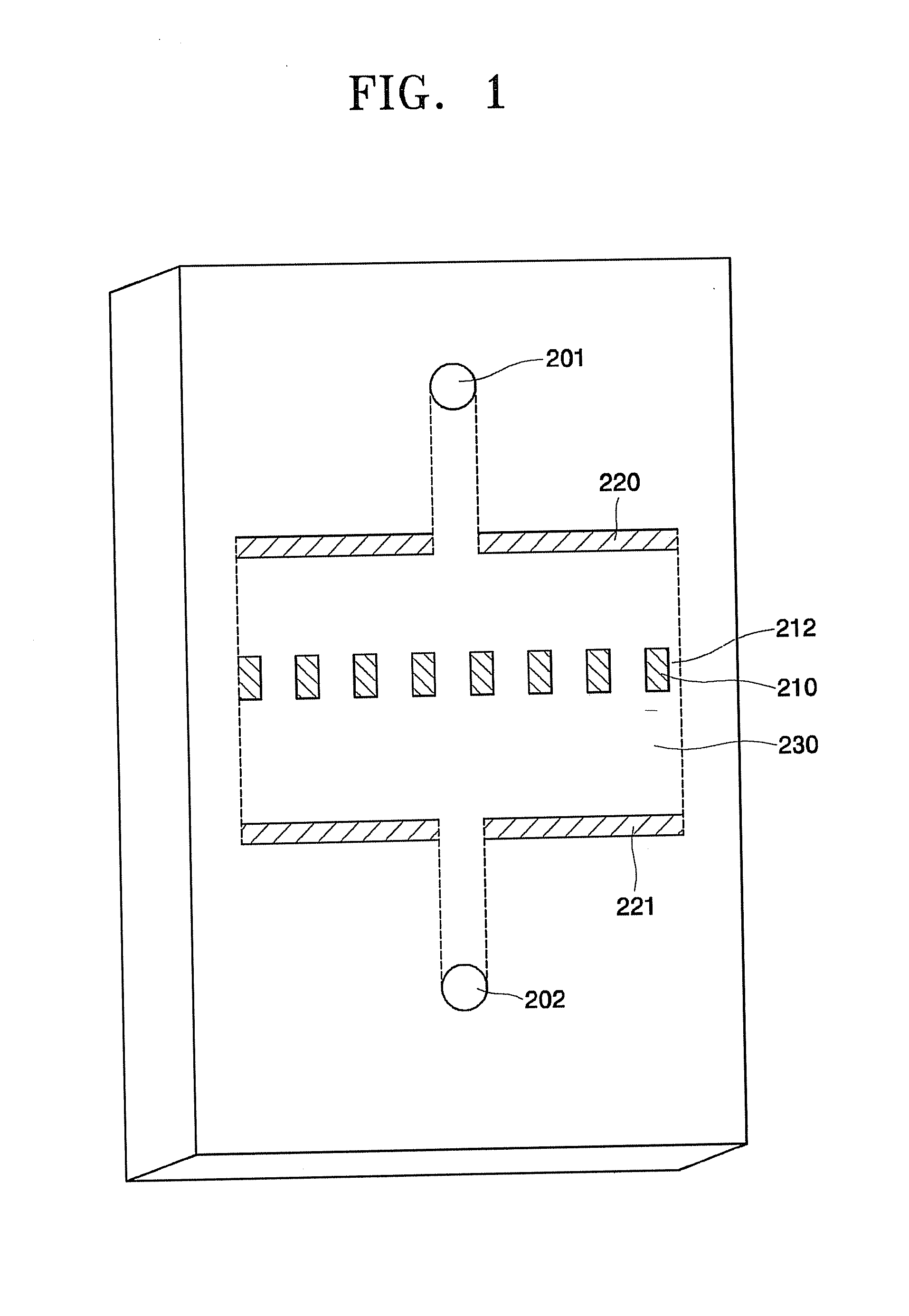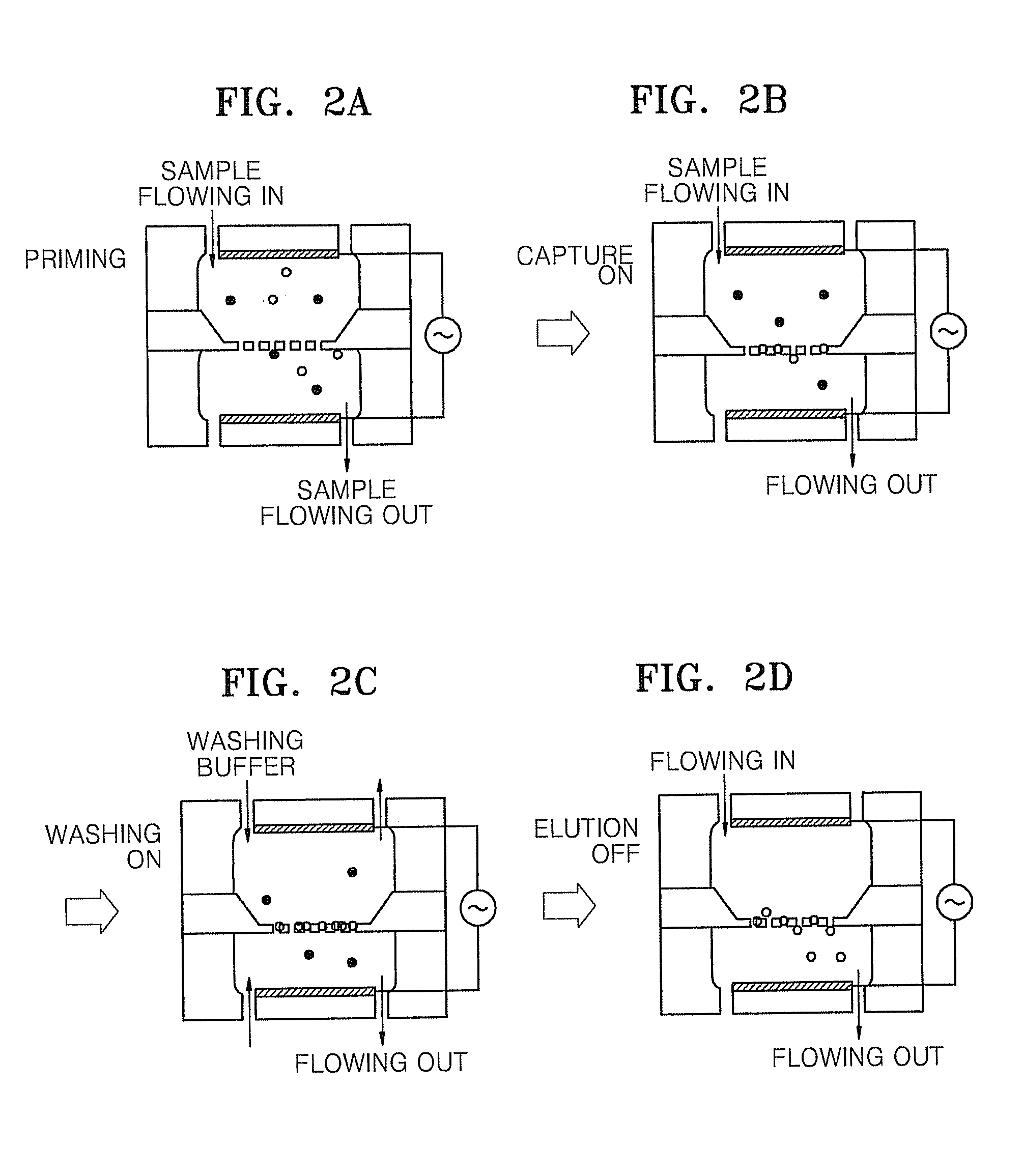Apparatus for and method of separating polarizable analyte using dielectrophoresis
a technology of dielectrophoresis and apparatus, which is applied in the direction of fluid pressure measurement, liquid/fluent solid measurement, peptides, etc., can solve the problems of not being suitable for separating the target material, the apparatus is limited to enriching the target material, and it is difficult to actually separate a sample, etc., to achieve the effect of increasing the generation of asymmetric electric fields and large quantities of samples
- Summary
- Abstract
- Description
- Claims
- Application Information
AI Technical Summary
Benefits of technology
Problems solved by technology
Method used
Image
Examples
example 1
Change of Electric Field in Two-dimensional Columnar Structure and Three-Dimensional Pore Structure
[0064] Changes of electric fields and sizes of dielectrophoresis forces in a two-dimensional columnar structure and a three-dimensional pore structure were observed using computational fluid dynamics and multi-physics software CFD-ACE (CFD Research, Huntsville, Ala.).
[0065]FIG. 3 is a graph illustrating voltages, electric fields, and maximum dielectrophoresis forces with respect to a gap or a distance from a pore central unit in a two-dimensional columnar structure and a three-dimensional pore structure. As shown in FIG. 3, changes of the voltage, the electric field, and the maximum dielectrophoresis force in the vicinity of the pores or in the middle point of the distance, such as the distance from the pore central unit at 0 μm, were remarkable in the three-dimensional pore structure as compared to the two-dimensional columnar structure. FIG. 3 illustrates that materials are easily ...
example 2
Change of Maximum Dielectrophoresis Force Based on Pore Shapes in Three-Dimensional Pore Structure
[0071] Change of the maximum dielectrophoresis force based on pore shapes in the three-dimensional pore structure was observed using CFD-ACE (CFD Research, Huntsville, Ala.).
[0072]FIGS. 5A through 5E are schematic diagrams illustrating pores used in the example, which are longitudinal sectional drawings of each pore shape. CW is 200 μm, TH is 75 μm, and TO is 50 μm in each pore. Looking at the pore shapes in the longitudinal sectional drawings, FIG. 5A has a symmetrical semicircular shape, FIG. 5B has a symmetrical triangular shape, FIG. 5C has an asymmetrical triangular shape, FIG. 5D has a rectangular shape, and FIG. 5E has a symmetrical arc shape.
[0073]FIG. 6 is a graph illustrating maximum dielectrophoresis forces with respect to the pore shapes. As shown in FIG. 6, the maximum dielectrophoresis force was remarkably high when a portion of the pore hole had a sharp edge. For examp...
example 3
Change of Maximum Dielectrophoresis Forces Based on Pore Dimension in Three-Dimensional Pore Structure
[0074] Changes of the maximum dielectrophoresis forces were observed according to the pore dimension in the three-dimensional pore structure. In the current example, the pore had a triangular shape in the portion of the membrane defining the pores as shown in FIG. 5B. The CW, TH, and TO measurements were varied while observing the changes of the maximum dielectrophoresis forces.
[0075] The membrane including the pores having the symmetrical triangular shapes as shown in FIG. 5B was used, wherein the CW was changed from 200 μm to 1,000 μm, the RTO (=TO / CW) was changed from 0.025 to 0.25, and the RTH (=TH / CW) was changed from 0.025 to 0.25. The density of the pores was 517 pores / diameter 5 mm in the circular membrane.
[0076]FIG. 7 is a graph illustrating the maximum dielectrophoresis forces with respect to CW, TH, and TO. The variables used in FIG. 7 are shown in Table 2. In FIG. 7, ...
PUM
| Property | Measurement | Unit |
|---|---|---|
| diameter | aaaaa | aaaaa |
| diameter | aaaaa | aaaaa |
| thickness | aaaaa | aaaaa |
Abstract
Description
Claims
Application Information
 Login to View More
Login to View More - R&D
- Intellectual Property
- Life Sciences
- Materials
- Tech Scout
- Unparalleled Data Quality
- Higher Quality Content
- 60% Fewer Hallucinations
Browse by: Latest US Patents, China's latest patents, Technical Efficacy Thesaurus, Application Domain, Technology Topic, Popular Technical Reports.
© 2025 PatSnap. All rights reserved.Legal|Privacy policy|Modern Slavery Act Transparency Statement|Sitemap|About US| Contact US: help@patsnap.com



